My sister and I went on a cruise in the Arctic Circle. With 24 hours of daylight, we had to 'create' nighttime in our rooms.

- My sister and I went on a two-week expedition cruise in the Arctic Circle.
- Every day was an adventure.
In June 2024, I embarked on an extraordinary two-week expedition cruise throughout the Svalbard Archipelago in the Arctic Circle on the beautiful Sylvia Earle. It's one of Aurora Expedition's two eco-friendly, purpose-built small ships that explore wild and remote regions of the world.
My companion was my sister, Diane Ross, a travel advisor who specializes in river, ocean, and expedition cruises. We have both taken many cruises but this was our first expedition cruise. Although we had some preconceived notions of what this region of the world would look like, we had no idea just how majestic and other-worldly it would be.
We started our journey with two overnights before getting on the ship
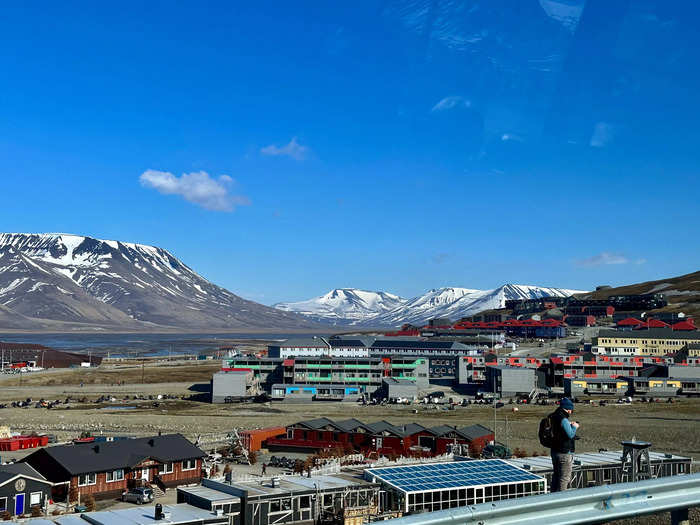
We first flew into Oslo, Norway, for an overnight and then took a charter flight to Longyearbyen, the northernmost town in the world, for another overnight and land tour before boarding our ship. When we finally arrived in our stateroom, we were exhausted from almost three full days of travel, and our beds looked tempting.
Every day was an adventure
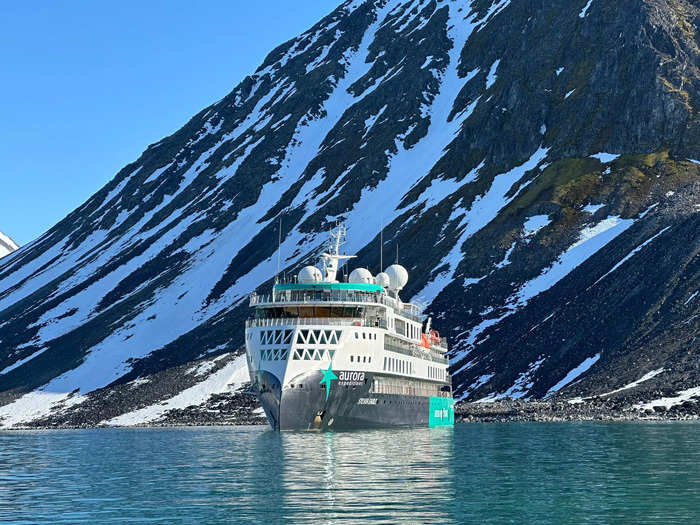
But we were immediately summoned to an orientation by the ship's Expedition Team, where we learned that one of the most thrilling aspects of these trips is that you never know exactly what each day will hold, but it's always guaranteed to be an adventure.
Every afternoon before dinner, passengers and the expedition team gathered in the Lecture Lounge to review the next day's itinerary, knowing that things may change according to weather and wildlife conditions.
Expert guides took us exploring on Zodiacs
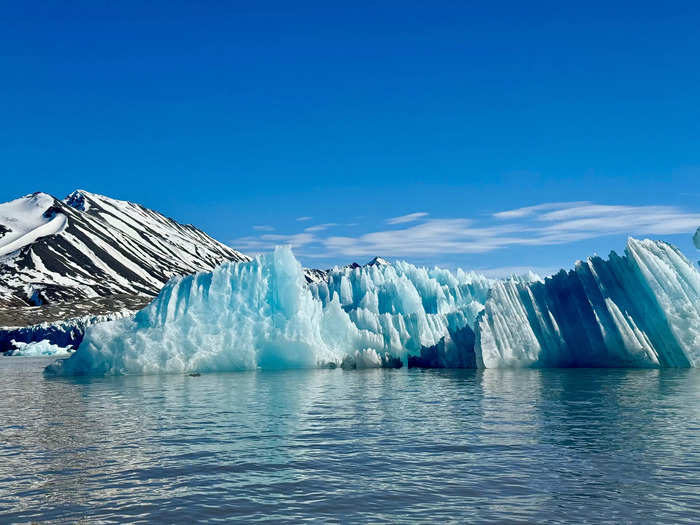
On the first full day, after getting fitted for muck boots and waterproof polar expedition jackets, we climbed into Zodiacs and set out to explore the glaciers, icebergs, and bird cliffs. At times, it looked like we were on another planet, with no other humans in sight. The vast expanse of the Arctic waters, the exquisite ice formations, and the distant glaciers were overwhelmingly beautiful.
Other than the sounds of the Zodiacs cutting through the water and ice, the cawing of birds, or the calving of the icebergs, we were silent most of the time. Our expert guides offered commentary about the geology and wildlife in each area, but mostly, we were content to bask in the meditative quiet.
We saw walruses sunning
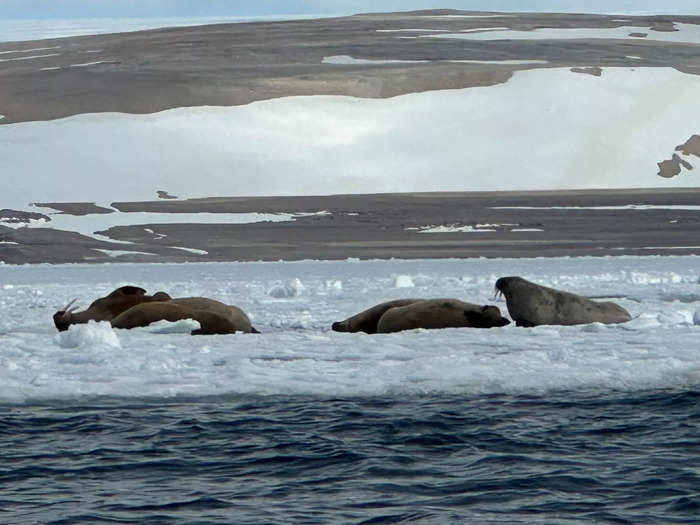
Arctic wildlife includes such wonders as reindeer, polar bears, seals, walruses, arctic foxes, and several species of birds. The first day's excitement of tracking a reindeer across a mountain through photos and video was only exceeded by the polar bear we saw on the second day.
It was fun to watch the polar bear stalking a herd of walruses bobbing up and down in the water. The polar bear lumbered slowly toward the walruses and then stood up on its hind legs and actually did a little prancing jump a couple of times.
We silently watched polar bears so as not to disturb them
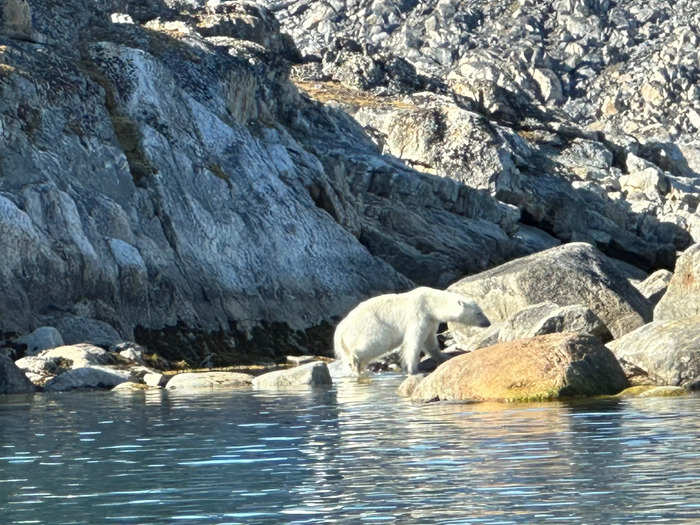
Almost every day, there was a polar bear sighting either from the ship or from the Zodiacs, and each time was more thrilling than the last. The most momentous was when we did a "round robin" close to a large area of pack ice upon which a polar bear was sunning.
We circled silently around for nearly an hour so each Zodiac could get closer for photos, moving slowly so as not to startle the bear away. The gentle lapping of the water against the sides of our boats, the warm sun shining down, the crisp air, and the vast expanse of ice and snow was hypnotic. Time was suspended, and we were content.
We got to make a rare visit to Kvitøya, or White Island
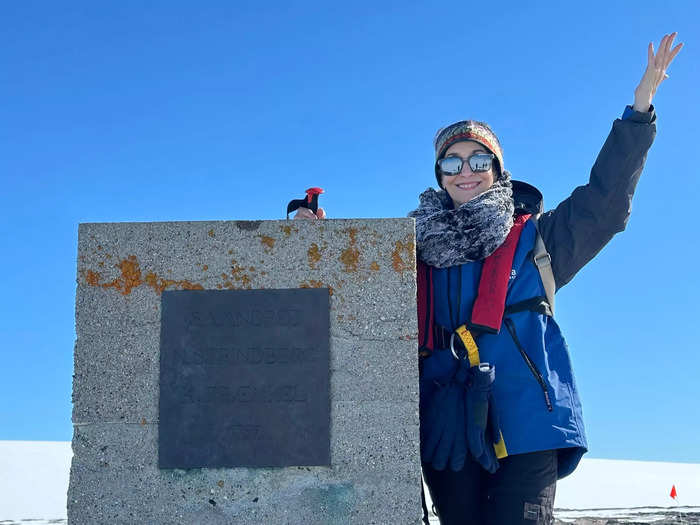
Another highlight was our rare excursion to Kvitøya, the White Island. From the ship, it looks like a wide white dome floating in the water, with no vegetation interrupting the smooth and nearly blinding expanse of snow. It was the landing site of a three-man expedition crew led by Swedish explorer S.A. Andree in 1897. Searching for the North Pole in a hydrogen balloon that had not been properly tested, they crashed only three days after launch.
Their whereabouts were unknown until 1930, when the remains were discovered by another expedition team who found diaries, scientific logs, and glass negative plates from which photographs could be developed. It was deduced that Andree and his fellow explorers died within two weeks of landing on Kvitøya.
We experienced a once-in-a-lifetime hike
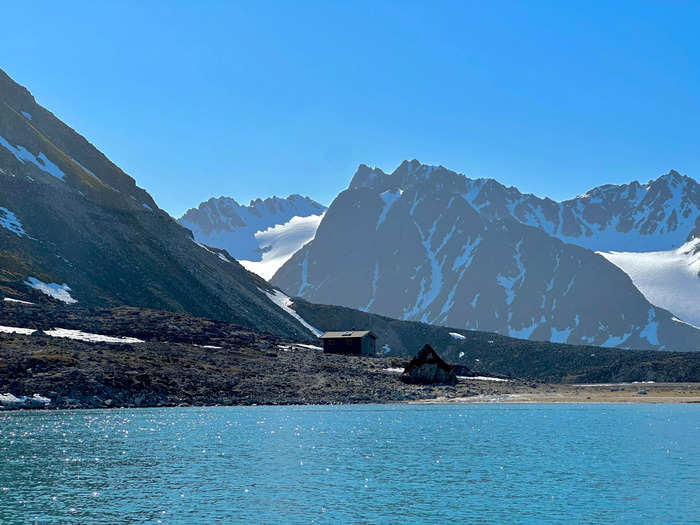
According to our expedition leader Howard Whelan, who has worked for Aurora for 22 years, Zodiacs have been able to approach Kvitøya but not land on the island. Either the water is too choppy, or the weather conditions are too windy or foggy.
On this particular day, the weather was pristine, and we were the first group that Howard has been able to safely land on the island to trek up to the monument honoring the three explorers. Starting next year, the Arctic Circle will be restricted to only 43 sites where people will be allowed to land, and Kvitøya will no longer be accessible in the same way. So we were very fortunate to experience this once-in-a-lifetime hike.
We didn't see the northern lights and had to "create" nighttime in our rooms
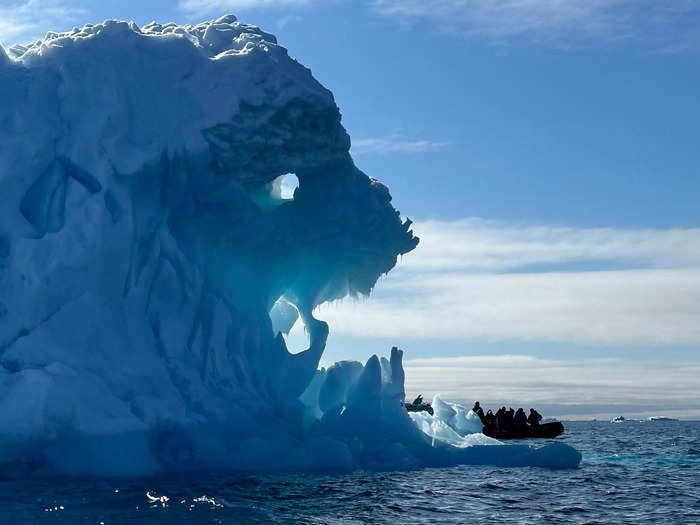
People have asked if we saw the northern lights; unfortunately, summer is not the time of year to witness that phenomenon. Instead, we had 24 hours of daylight, which was truly a weird experience. It was just as bright and sunny at 10 p.m. as at 8 a.m., and we had to "create" nighttime by closing the blackout curtains in our stateroom to sleep. Our circadian rhythms were out of whack, but after a few days, we adjusted fairly well.
The crew was incredible. They were knowledgeable about the history and science of this remarkable area and well-trained in safety measures on land and water. They ate with and circulated amongst the passengers, and they were attentive to diverse physical capabilities by offering varying levels of exertion on hikes.
The ship was homey, and I loved the experience
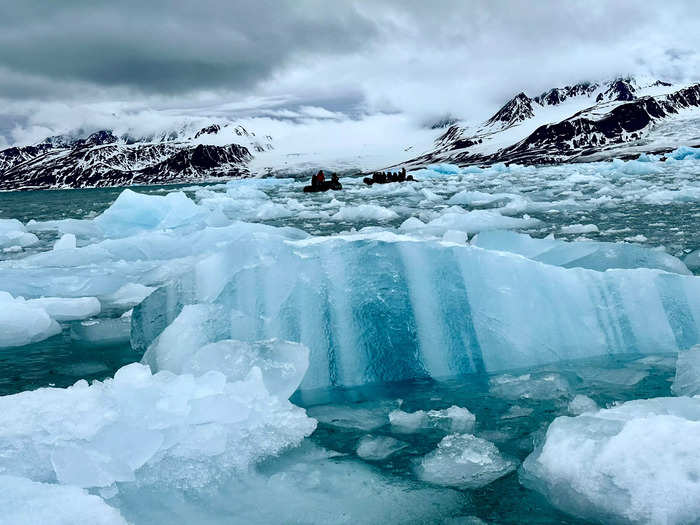
The ship is small, homey, and friendly. The food was plentiful and excellent, and attention to individual dietary needs and preferences was stellar. Beer and house wine, as well as soft drinks and juices, are included with dinner, and there are always snacks, coffee, and tea available. There is also a medical clinic and doctor on board, with medications available if needed.
If you want an experience like no other, I highly recommend an expedition cruise. Aurora Expeditions offers Polar Expeditions and Discovery Expeditions from 7 days to 34 days, so of course, prices and itineraries vary considerably (starting from $5600 to $35,000 per person).
Expeditions cost more than a traditional ocean cruise because there are far fewer passengers, and you are making an investment in the specialized equipment, expedition team's expertise, and access to remote locations. Some cruises offer ice camping, snowshoeing, kayaking, and other activities for a surcharge. It can truly be a craft-your-own-adventure type of experience. Happy traveling!
Popular Right Now
Advertisement